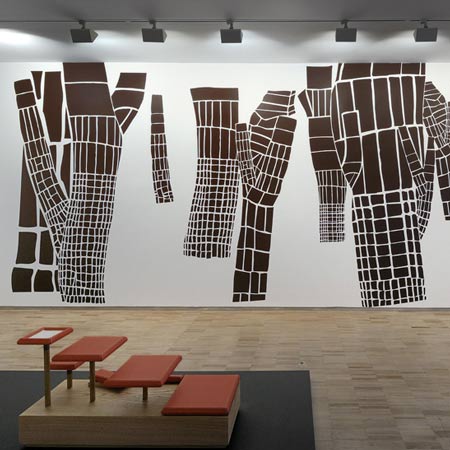
Living Wood by Matali Crasset
An exhibition of work by french designer Matali Crasset called Living Wood is on show at Galerie Thaddaeus Ropac in Paris, France.
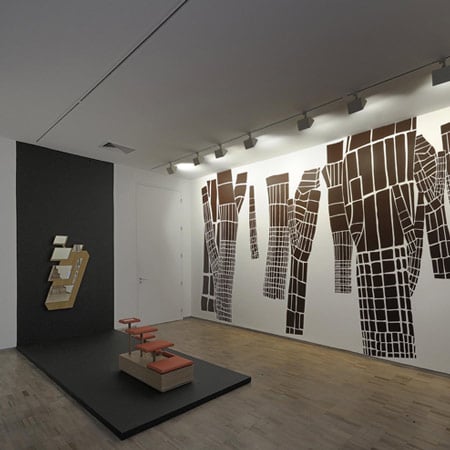
Pieces include furniture that consists of orange leather seats arranged on a block of wood, and an animation entitled Spring City.
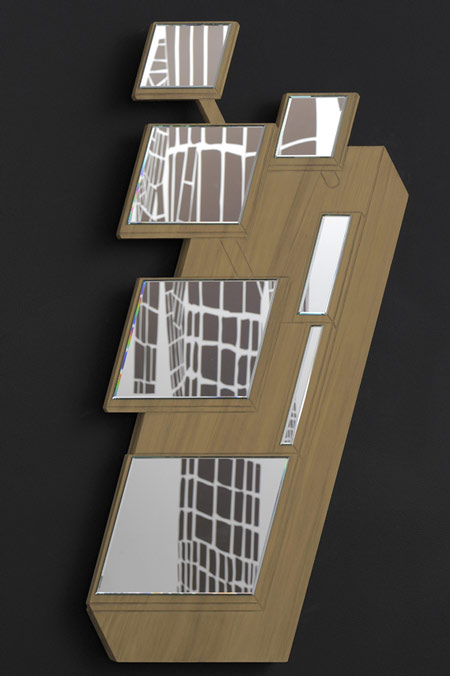
The exhibition continues until 10 January.
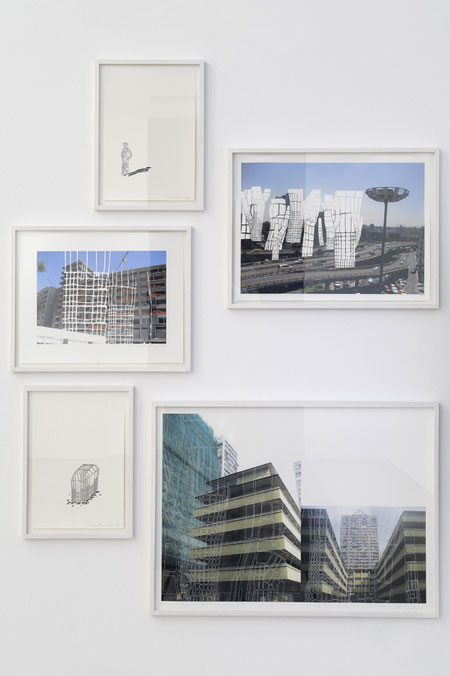
The following information is from Matali Crasset:
--
LIVING WOOD
Galerie Thaddaeus Ropac is pleased to announce its first solo show of Matali Crasset’s design furniture and an animation film, to take place between November 29 and January 10 2009.
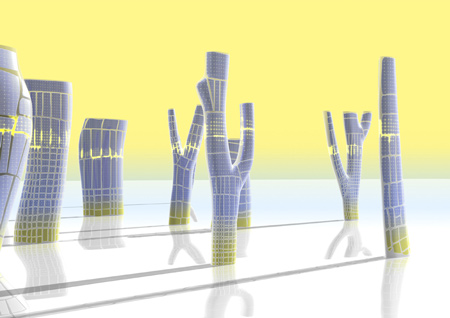
Matali Crasset is interested in moving spaces that are reliant on design units and their flexibility. Conversely, the bench prompts an investigation into our perception of both meditation and contemplation. Nonetheless, we discover that this is a project imbued with a proactive comfort.
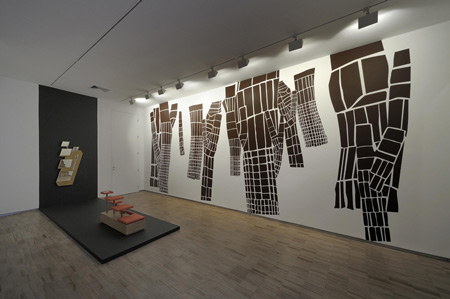
The furniture is made of one piece of wood that seems to have been split into various units for practical purposes. It is raised above the ground, facing upwards, to serve as a base for the flat orange leather surfaces, which protrude from it at various heights. A revolving stool is in the middle of a low table, accompanied by a much higher section and a treasure box.
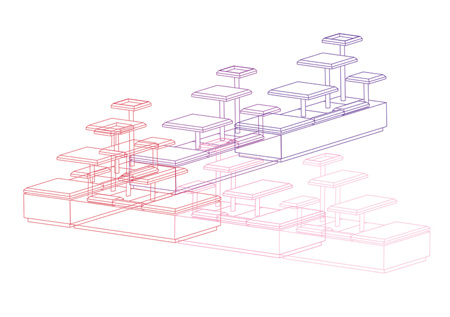
Another rectangular block of wood, which is placed horizontally against the wall, is a reflection of the first installation, although it plays around with perspective. There is a shimmering aspect to its mirrored surfaces. Just as the mirror plays with appearance, the same is true of the oak panel’s surface that is painted in the manner of trompe l’oeil, imitating the texture of combed oak.
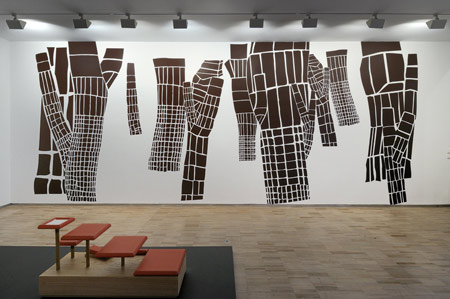
The film animation Spring City invites us to explore the world of growing trees. Bark becomes multi-faceted and the forest transforms into a city. In this work, Matali Crasset continues to explore the relationship between the natural and the artificial.